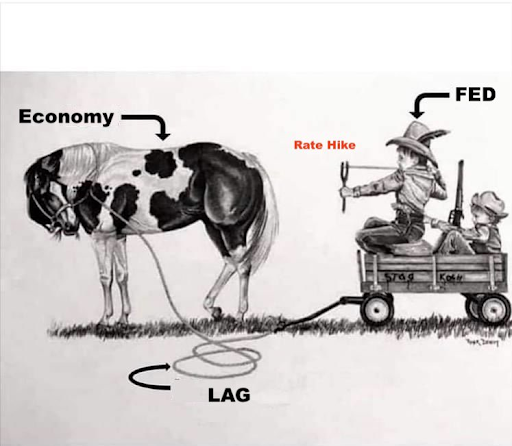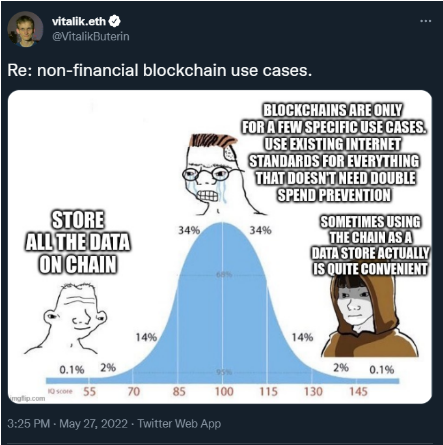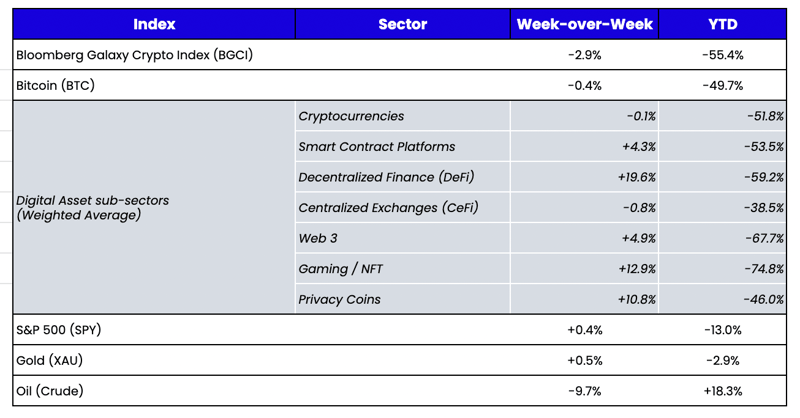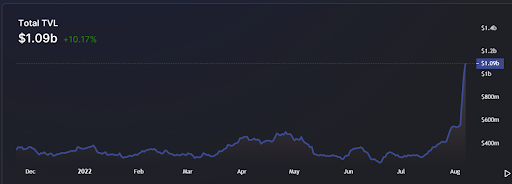 What Happened This Week in the Digital Assets Markets?
What Happened This Week in the Digital Assets Markets?
Week-over-Week Price Changes (as of Sunday, 08/07/22)
Source: TradingView, CNBC, Bloomberg, Messari
This week's edition is written by Nick Hotz, CFA, Arca Research Associate, and Michal Benedykcinski, Arca Sr. Vice President, Research
Back in Upside-Down World
In the aftermath of the Federal Reserve FOMC meeting last week, major digital assets had few macro catalysts to drive market direction. Continued bullish sentiment out of the Fed meeting and favorable options expiration dynamics helped propel equities marginally higher, though the rally did not extend to digital assets. Duration-sensitive assets outperformed as interest rates on the long-end of the yield curve fell, pricing in lower long-term growth and inflation prospects.
The biggest catalyst, the jobs report, showed markets clearly back in upside-down world, more concerned with manna from the Fed than the strength of the U.S. labor market. After rapidly pricing in a dovish pivot since the July FOMC, risk assets initially sold off as the report depicted a red hot U.S. labor sector, though they rallied back to even by the end of the day. The economy added over 500,000 jobs, lowering the unemployment rate to 3.5% which matched January and February 2020’s 50-year low. Of even greater concern to markets were estimates of wage growth, which after previously showing a slowdown, were revised to show no decrease, raising concerns that persistent inflation is creating more of a vicious wage-price spiral than previously thought.

Source: Andreas Steno
It’s inflation week, and all eyes are on the U.S. CPI report. Markets are looking for headline inflation to (finally) slow down. Signs of peak inflation abound, with commodity prices declining precipitously from their highs - historically a strong sign of an impending inflation slowdown.
Source: Teddy Vallee
The biggest question for markets continues to be the Fed response to peak inflation. Will it rely on forward-looking indicators like commodity prices, housing data, and purchasing manager surveys (PMIs) to show a broadening slowdown as an indication to pivot? Or will it use lagging indicators, as it typically has, like core consumer prices and jobs to justify the continued slowing of the U.S. economy in the name of stamping out perniciously sticky inflation?
Hacks, back to back
Cross-chain bridge Nomad was exploited for nearly $200 million on Monday, the latest of a swath of token bridges to be drained. While Nomad’s optimistic security model, which works similarly to optimistic rollups, held up, a smart contract bug from a recent software update allowed hackers to withdraw money from the bridge that didn’t belong to them. Nomad’s team is commonly seen around the industry as one of the better ones working on bridging, and this hack exemplifies the difficulty of perfecting security in notoriously complex bridging contracts.
The following day, a hack of the Slope wallet drained $6 million across more than 9,000 wallets. More notable for its breadth and chaotic nature than value lost, the hacker was able to access some accounts from the Phantom wallet, causing users to fear a critical bug on Solana’s most popular wallet. Slope allegedly stored users' private keys as unencrypted text on a centralized server, a massive red flag from a security perspective.
Despite the tumultuous start to the week, we continue to see real dispersion driven by fundamental catalysts at work in digital assets. The strength of Ethereum Layer 2 Optimism’s ecosystem is a prime example, with token distribution to DeFi applications catalyzing a wave of yield farming and assets flowing into Optimism. This is a notable shift from May and June when digital assets just traded as high beta risk assets at the whim of the Fed. We see this as a sign of an increasingly healthy market.
Optimism Total Value Locked (TVL)
Source: DeFiLlama
5 Ideas That Might Change Everything
As crypto cycles have progressed, adoption has been driven by a handful of potentially revolutionary ideas and applications. The first retail-involved bull market in 2013 was bolstered by the idea of a non-sovereign, permissionless system of money in Bitcoin. The second in 2017 was backed by the ICO mania, with speculators seeing the power of permissionless financing of new projects via Ethereum. While less retail-motivated, 2020's DeFi summer brought permissionless and composable decentralized finance to the masses. Most recently, the early 2021's NFT boom asked users to consider the question, "what else can be tokenized into a digital asset?" or even "what can't be?"

All of these ideas still have a ways to go before reaching maturity, ensuring our view of rapid digital asset adoption by the global population. We would be naïve to think that all the fundamental innovation in something as revolutionary as digital assets has already occurred. Despite a tough 2022, builders have been building and iterating on some of the most promising new ideas. We’re watching closely to understand what has the potential of breaking out and becoming a massive new application.
1) Decentralized Identities
There’s a growing understanding in the web3 space that, as much as we value anonymity, it's really hard to do a lot of things when you have no idea who you’re interacting with:
- Lenders can’t provide credit without repercussions to a defaulting borrower
- DAOs and communities can’t prevent sybil attacks on governance by the same person creating multiple wallets without resorting to a highly inequitable token–weighted voting model
- Anonymous personalities can’t demonstrate their achievements without revealing other information about themselves
Decentralized identity tools step in to fill this gap. Decentralized identifiers (DIDs) attach an ID to all existing addresses to enable proof of ownership. Additionally, verifiable credentials (VCs) can be signed by one DID over to another, and contain an attestation by the issuer about the recipient. For example, someone possessing a VC could demonstrate membership in a DAO, with the recipient of the VC having the ultimate authority over who can see this credential.

Soulbound tokens (SBTs), coined in the popular post by Ethereum co-founder Vitalik Buterin as permanent and non-transferable NFTs, take it a step further. Simply put, SBTs can represent real-life achievements (degrees, certifications, awards) akin to badges earned in a video game for completing a specific task. By making them non-transferable they could also unlock a wide range of use cases going far beyond credentialing, whether it’s personal information (name, DoB, nationality) or social records (criminal, medical, political). It’s not hard to imagine the advantages of on-chain credential verification when last year alone 42 million Americans became victims of identity fraud, costing $52 billion in total losses, according to Javelin’s 2022 Identify Fraud Survey. Applying SBTs in the context of digital assets could help curb some of the scams that have plagued many of the popular decentralized applications from NFTs to DeFi by having real on-chain credentials.
It is important to acknowledge the popular criticism of SBTs; building blocks for a dystopian world governed by a social credit system. SBTs will always be associated with a wallet, whether the recipient likes it or not. While the mechanics of the SBT implementation are challenging, some of the early stage experiments are encouraging: improvement of wallet privacy, security, recovery procedures, and unwanted airdrops. An SBT could help with something like credit-based lending to demonstrate whether the borrower paid in full or defaulted. However, SBTs could also demonstrate false information or other information the recipient would not like shared, without recourse. Powerful ideas have both advantages and disadvantages, but the ability of decentralized identities to unlock trust in a permissionless and anonymous digital world makes this a pivotal idea for the future of web3 applications.
2) Modular Blockchains
Today’s blockchains have been plagued with persistent problems from speed to downtime to decentralization. These issues stem from the “blockchain trilemma,” which posits that chains can only achieve two of the three features of scalability, security, and decentralization. In order to perform better in one feature, a tradeoff must be made in another. While some technical innovations have pushed out the frontier of what is possible, the trilemma broadly remains intact.
Modular blockchains look to solve the trilemma by breaking apart the core features of a blockchain: execution, security, data availability, and consensus into separate chains. Each of these chains can then optimize their specific focus area with fewer trade offs than a stand alone blockchain. For example, Ethereum provides security, data availability, and consensus, while Ethereum Layer 2 roll-ups provide better execution within the ecosystem. Emergent data availability solutions like Celestia and Polygon Avail or state storage from Arweave can break down these roles even further.
Truly modular blockchains turn the trilemma into a flywheel. More users lead to lower average costs, but more stakers, generating more security and greater ability to create secure data shards, lead to more data availability, which leads to lower costs, and once again more users. Modular chains will improve the user experience significantly when new applications are launched in subsequent market cycles.
3) Interest Rate Swaps and Digital Asset Yield Curves
The last few years of DeFi have brought some of the most fundamental financial applications of exchange, lending/borrowing, and securitization into the permissionless digital world. While these basic tools of commerce are certainly important, we haven’t yet achieved the true end result of what the modern global financial system does: transfer value across time. DeFi applications mostly allow trading of spot assets and derivatives with variable interest rates when borrowing. For a comprehensive system of finance, we need markets to provide certainty for hedging with futures and forwards, as well as fixed interest rates for savers and borrowers to be able to plan their finances ahead.
Interest rate swaps aren’t a new concept, but gained little traction during the last market cycle. Borrowers were primarily leveraged traders and yield farmers who moved money so quickly that locking in a specific interest rate was a second thought. Having a collateral asset and a yield curve changes that. A yield curve allows the market to price money throughout time, setting a fixed rate of borrowing over various maturity periods. With a yield curve, the market can judge the sustainability of any source of yield - potentially deeming a 100% variable APR over the next month from a speculative yield farm only likely to pay 10% over the next 12 months. DAOs will be able to hedge rates or borrow at forward rates, allowing the issuance of fixed rate (rather than variable rate) bonds and the ability to lock in financing for new projects. Similar to our existing economy, yields will be priced at a spread to the risk-free collateral rate; either a stablecoin rate or a spread to a layer 1 currency token in the web3 native world.
There’s a reason that the futures/forward and interest rate markets are among the largest in the world. They provide the foundation for the transfer of value throughout time, an essential function of the global financial system. The emerging ability to price money as a function of time in DeFi will contribute to the stability of the system and certainty for all its organizations and users.
4) Decentralized Science (DeSci)
As many of the web3 builders continue to focus on financialization, there is a widely overlooked grassroots movement tackling the future of funding and distribution of research. Decentralized Science (DeSci) utilizes the public network primitives (smart contracts, DIDs, tokenization, DAOs) to improve funding flows into critical R&D projects, incentivize collaboration among scientists, and improve discovery by breaking down the information silos imposed by industry intermediaries. DeSci continues the legacy of the Open Science movement from the last decade which aimed to make science more accessible and the research process more collaborative. Armed with blockchain tooling, this loose collective of DAOs is targeting the improvement of the entire value chain of scientific research from grant funding, to peer review, and finally access and distribution channels. Unsurprisingly, biotech is in the lead with many pioneering DAOs like Molecule (drug particle IP), VitaDAO (longevity), PsyDAO (psychedelics), and LabDAO (wet & dry labs network) changing the pharmaceutical research landscape with an open source ethos.

It is hard to dismiss the potential of the DeSci movement when you look at the highly concentrated and high margin nature of the academic publishing industry today. The academic publishing industry recorded close to $27 billion in global revenue last year; comparable annual revenues to the music and film industries, yet greatly exceeding profits with margins in the 40% range. Early experiments in DeSci demonstrate efficient smart contract mediation between authors and peer reviewers, removing the need for the predatory intermediaries. The emergence of new funding models using NFTs and token launches to directly support research is only starting to take shape, such as the monetization of IP via NFTs to sustain scientific communities, and DeFi protocols potentially supporting long-term researcher funding akin to legacy tenure. While COVID vaccines have been developed on the basis of publicly funded research, the majority of the profits still flow to pharma conglomerates with limited funds returning to the research community. The tokenized nature of DeSci could redistribute the ownership dynamics amongst critical stakeholders and recycle profits into additional scientific funding for the public good.
5) Zero-Knowledge Proofs
With security and privacy top of mind for existing market participants and new entrants alike, the cryptographic method of zero-knowledge proof (ZKP) is coming back into the spotlight. In essence, a zero-knowledge proof is a way of authenticating information without the need to reveal the sensitive content directly. The first popular implementation in digital assets was with the privacy coin Zcash in 2016, leveraging a form of ZKP to allow private information about transacting parties to be encrypted. The basic premise of the indirect proof is that the prover must attest they know the secret while the verifier should be able to check if the prover is telling the truth without the ability to use or reconstruct it. Imagine your bank asking you for select letters of your secret password to verify it’s you, in this instance you would not be disclosing your account contents, but simply attesting to your knowledge of the password. This model could help obfuscate commercially sensitive information allowing enterprises and individuals to transact safely on public blockchains with data sovereignty preserved. This powerful primitive led EY to release its ZKP blockchain solution in 2019 and was the inspiration for projects such as Aztec Network to embed ZKP into privacy-focused smart contracts.

Beyond anonymizing transactions, ZKPs are also foundational to the scalability challenges of Ethereum; the proofs are significantly smaller than the data they protect and process because verification is not as computationally intensive. ZKP-based scalability solutions do not modify Ethereum's native layer, but instead change its verification approach to support exponentially larger datasets by verifying payloads computed off-chain instead of computing small payloads on-chain. A great example of ZKP implementation is the emergence of Starkware, which increases the transaction throughput while moving computation off-chain to attract many of the popular Ethereum projects (dYdX for perpetuals trading, Sorare, Immutable X for NFTs). ZKP at its core provides an elegant solution for data integrity and ability to significantly lower gas costs to the end user.
With the prevailing sense of doom and gloom in the public markets we’re continuously reminded of the power of blockchain and original ideas to push digital asset innovation forward. For this week’s feature we decided to dive into several themes that have us excited about what lies ahead. If you and your team are actively working on those kinds of projects, please get in touch!

 What Happened This Week in the Digital Assets Markets?
What Happened This Week in the Digital Assets Markets?







